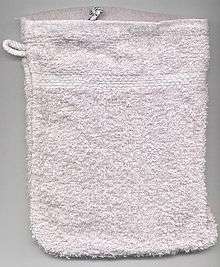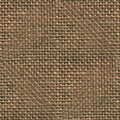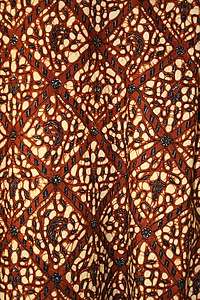Terrycloth
Terrycloth, terry cloth, terry cotton, terry towelling, terry, terry towel or simply towelling is a fabric woven with many protruding loops of thread, which can absorb large amounts of water. It can be manufactured by weaving or knitting. Towelling is woven on special looms that have two beams of longitudinal warp through which the filler or weft is fired laterally.[1][2] The first industrial production of terrycloth towels was initiated by the English manufacturer Christy in 1850. According to the Oxford English Dictionary, the word may derive from French tiré 'drawn', past participle of tirer 'draw out'.


About
There are two types of terry fabrics:
- Towel terry
- This is a woven fabric with long loops that can absorb large amounts of water. Its content is usually 100% cotton, but may sometimes contain polyester.
- French terry
- This is a fabric, used in men's, women's and children's clothes. One of its sides is flat, while the other side is with cross loops. It can be 100% cotton or be made from a variety of fibres, sometimes with spandex (also known as elastane or lycra). It is often warp knitted, and the term French Terry is colloquially used for all warp knitted Terry.
It is the length of loops that determines how much fluid is absorbed by the cloth as longer loops provide more surface area to absorb and come in contact with the fluid.
Items that may be made from terrycloth include babies' reusable nappies (UK English) or diapers (US English), towels, bathrobes, bedlinen, and sweatbands for the wrist or head. Terrycloth is also sometimes used to make sweat jackets. Terry towelling hats with a shallow brim were once popular with cricketers (like English wicketkeeper Jack Russell), but are no longer in fashion.
An alternative fabric used for towels is waffle fabric. A modern synthetic alternative is microfiber.
Citations
- "How bath towel is made—material, production process, making, history, used, composition, product, industry". Volume 4. How Products Are Made. Retrieved 4 July 2020.
- Yilmaz, Powell & Durur 2005.
General sources
- Yilmaz, Nasire Deniz; Powell, Nancy B.; Durur, Güngör (Summer 2005). "The Technology of Terry Towel Production" (PDF). Journal of Textile and Apparel, Technology and Management. UNC Stare. 4 (4): 115–160. ISSN 1533-0915. Archived from the original on 9 September 2006. Retrieved 4 July 2020.CS1 maint: ref=harv (link) CS1 maint: unfit url (link)


.svg.png)